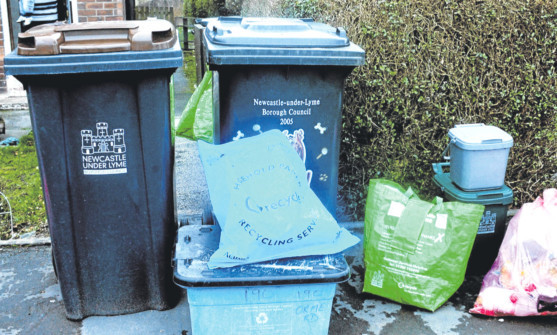
‘Shambles’ as experts predict rubbish collection u-turn.
Families across Britain could soon be asked to throw all their rubbish into just one bin.
Ecologists believe it’s only a matter of time before technology renders the multi-container system rolled out by councils across the country obsolete.
A reduction in bins would represent a total reversal of the current strategy. The claims have been greeted with astonishment by campaigners.
Ecologist Hugh Warwick, pictured, said: “In time technology will allow all rubbish to be put into one bin and then sorted on site. It is in everybody’s interest as it saves money because you just have one lorry going out to pick up waste instead of two or three. We must also remember to reduce our consumption of excessive packaging.”
To avoid EU fines and to cut down on landfill taxes, councils need to recycle a high proportion of waste. They could collect all household rubbish from one bin and then sort it at their own specialist facilities.
However the Waste (Scotland) Regulations 2012 require the separate collection of paper, card, glass, metals and plastics for recycling as well as food waste. The rules mean the average Scots family has to sort its rubbish into four or five different containers.
Doretta Cocks, of the Campaign for Weekly Waste Collection, also believes it is a matter of time before the trend is reversed and councils revert back to a one bin policy. She said: “At a basic level some people just don’t have the room for all these bins.
“In my opinion, if you add up the amount of money councils have wasted in various schemes and changes of strategy, it is very poor value for council tax payers. There doesn’t appear to be an agreement on what is best practice.
“In years to come I think people will look back and think, ‘My goodness what were they doing’. It’s a shambles. The technology is expensive at the moment but it will come down in cost and it is clearly the way of the future.”
Earlier this month Falkirk became the first council in the UK to vote through proposals to move residents’ bin collections to once every three weeks. It’s hoped the move will increase recycling and reduce landfill.
Eben Wilson, of Taxpayer Scotland, believes the current system of waste collection must be modified to achieve value for money. “We have repeatedly said that waste collection should be done by competing firms free to innovate, something which councils spending guaranteed taxpayers’ funding are very bad at doing,” he said.
“No one today knows the best way to organise collection, disposal and recycling of our waste, but we have to find out.
“The best way to do that is to allow householders to choose from the best suppliers offering the best method. It’s quite likely that this means one bin and industrialised methods of separation and recycling. Think of the wasted time and money for all Council Tax payers if this turns out to be true.”
One Scottish council, Dumfries and Galloway, has operated a one bin policy since 2007. It emerged in October that because of the “zero waste” regulations residents will soon be forced to use five containers instead.
A Scottish Government spokesman said: “Scotland has zero waste ambitions and the Waste (Scotland) Regulations represent a major step forward in achieving these.
“Properly managed waste, both domestic and commercial, has significant value, and the current approach to separating materials for recycling is the most effective way we have of harnessing this value and moving toward a circular economy.”

Enjoy the convenience of having The Sunday Post delivered as a digital ePaper straight to your smartphone, tablet or computer.
Subscribe for only £5.49 a month and enjoy all the benefits of the printed paper as a digital replica.
Subscribe